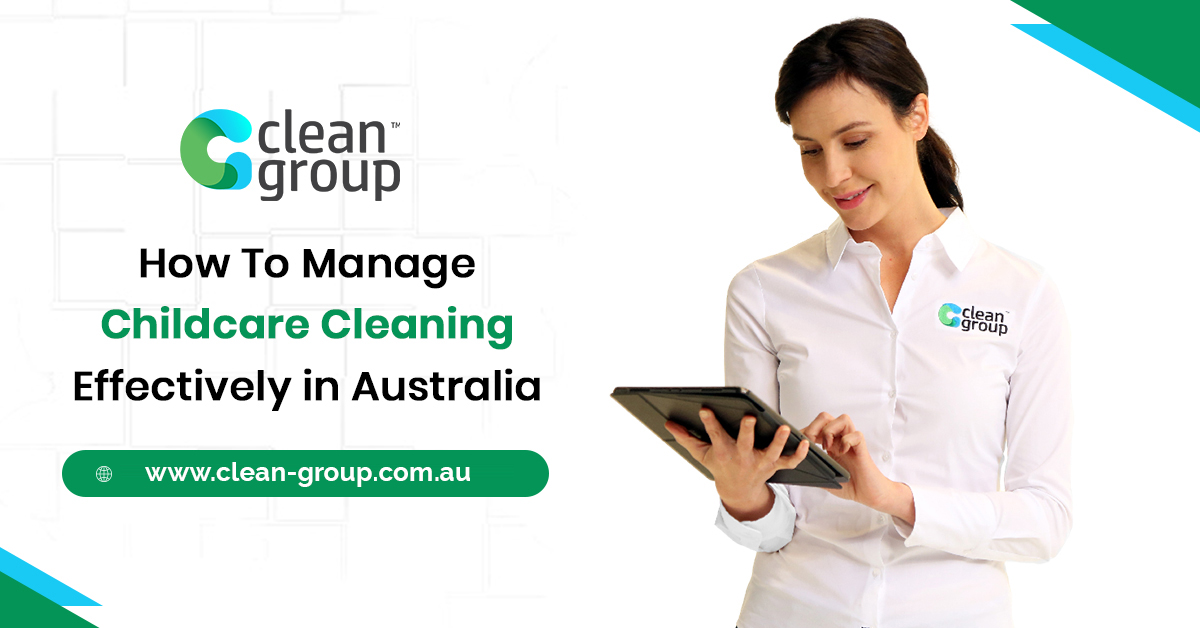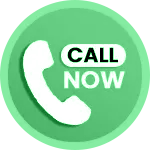There is a surge in demand to manage childcare cleaning services in Australia. The main driver for this demand is the encouragement of women to go back to work after giving birth.
In 2010, there were about 5,900 long daycare centres nationally, but now, there are well over 6,800, making long-term childcare an essential part of Australia’s childcare industry.
The sector is set to increase by a massive thirty-four percent from nine billion from 2014 to 2015 to twelve billion in 2019 to 2020. The government supports childcare. Today, over 1.2 million children attend approximately 17,000 government-approved child care services nationwide.
With this increasing demand in the childcare industry, the cleaning business becomes in demand. Childcare facilities all across Australia have to follow specific guidelines on how cleanliness should be observed all across the centre. How do cleaning businesses manage childcare commercial cleaning effectively?
We will tell you how. This article will bare to you our secrets on how we consistently manage cost-effective cleaning for daycare centres. Our expertise and experience have helped us along our way.
At the moment, our professional childcare centre cleaners are all delivering their best to help every childcare meet the government standards in keeping the centres a healthy and safe place for our young ones.
Manage Childcare Cleaning Daily Practices
- Regular hand hygiene
- Identify the difference between cleaning, sanitizing, and disinfecting
- Pick the right cleaning product to do the job
- Always read and understand labels before using cleaning products
- Do not mix cleaning chemicals unless the label says otherwise
- Keep and store cleaning chemicals in a dry place away from the reach of children
- Call the nearest medical facility when accidental exposure occurs
How to Effectively Clean the Childcare Facility
Please consider this as a guide since the professionals for childcare centres cleaners in Sydney and across all of Australia observe these practices. The people in charge of cleaning are all familiar with all the policies and procedures that concern health and hygiene here in Australia.
- Use warm, soapy water for change mats. Wipe it with a paper towel afterward. You can also put the change mats under direct sunlight during lunchtime.
- Use the dishwashing soap with warm water in cleaning toys. Make sure to rinse it thoroughly and leave it in the sun to dry. Keep all of the teething toys in one box and make sure to wash and sanitize them at the end of each day.
- Always clean any surface before applying the disinfectant. By now, we should know the difference between the two. Disinfecting the surface will not leave it clean. Also, keep in mind that disinfectants need to sit for a certain number of minutes for them to work effectively. Our cleaner needs to read and understand the labels of all the cleaning chemicals before using any chemicals.
- For outbreaks and spills, same as what was mentioned above, you need to clean and dry the surface first before applying bleach. As a guide, disinfectants are needed during reported outbreaks.
- Never use vinegar as an alternative to disinfectant. Vinegar does not kill enough germs in a short period.
Cleaning Essentials
- Colour-coded washable cloths for cleaning the surfaces, bathroom, and kitchen
- Dishwashing liquid
- White vinegar
- Bi-carb soda
- Essential oil
- Detergent bar and flakes
We suggest that you keep your essentials in a caddy. It will help you clean efficiently because you got all the things that you need in one spot. You can also store the caddy in a safe place in one go.
These essentials are all pro-green cleaning. We are trying to lessen chemical contact as much as we can because we are dealing with children.
How to Clean Specific Surfaces in Your Childcare
Manage a childcare cleaning environment orderly and clean is very crucial for the health, safety, and emotional well-being of staff, children, and their families.
Activity Areas
- Hard floors like tiles and vinyl need to be vacuumed or swept every day. Wet mopping has to be observed at least once a week or as needed. For best results, wet mop with warm water and detergent. Hard floors need to be mopped daily in dining areas, infant, and toddler’s areas.
- Vacuum the carpeted areas daily. Quarterly steam carpet cleaning is also recommended or at least twice a year.
Bathroom
We wash and disinfect the following areas at least once a day:
- Tap handles
- Basins
- Toilet flush handles
- Toilet seats and bowls
- Door handles
- Nappy bins
- Paper towel dispensers
- Soap dispensers
Cleaning Equipment
- We wash and clean mops every after use. We use hot water and soap. We thought our cleaner to soak the clean mop in a suitable disinfectant before leaving it to dry.
- Our cleaners also practice using separate cleaning rugs for cleaning higher-risk areas like the toilet and bathroom. These clothes can only be used in these areas and not anywhere else. We use colour coding to make it easier for us to identify which rug to use in a specific area. We train the cleaners to wash the cleaning rugs separately.
Kitchen
Food preparation and feeding areas have to be attended to, cleaned, and disinfected before and after use.
- Tabletops, benches, and high chairs need to be cleaned and disinfected before and after use.
- Daily cleaning and disinfecting for all kitchen surfaces like floor, sink, door, and cabinet handles.
- Microwaves and ovens are to be cleaned internally at least once a month.
- The hand wash basin in the kitchen should be cleaned and disinfected at the end of each day. Do not use the hand washbasin other than hand washing.
Nappy Change Area
- The nappy change area and pad can be a breeding ground for bacteria. Having that said, this area has to be thoroughly cleaned and disinfected after every nappy change and at the end of each day.
- We use disposable towels or single-use cloth on the nappy changing pad. This will reduce the contamination of the pad. We clean the nappy changing area with warm water and soap, and we apply an appropriate amount of disinfectant. We let the disinfectant sit on the surface depending on the curing time indicated on the label. After that, we rinse and dry the pad. The rinsing part will make sure that all residues that can irritate are gone.
- Nappy changing is an important part to manage childcare cleaning facilities as the covers and pads need to be smooth and in good condition because germs survive in between cracks, holes, folds, and seams.
Toys
Infants and toddlers should not share toys, but this is impossible in a childcare set-up. Most of the time, children put toys in their mouths. These toys have to be washed and disinfected between users.
Guide for Cleaning Toys
- Hard Plastic Toys – scrub in warm soapy water and then rinse. Immerse in sanitizer and allow to soak depending on the recommended period. Rinse in clean water and later air dry. This procedure has to be done at least every after use for younger children and then at least once a week for the older children.
- Wooden Toys – wipe with moist cloth clean and then apply an ample amount of sanitizer. Rinse and dry quickly.
- Cloth Toys and Dress Up Clothes – wash in the washing machine with warm water and soap. Air dry thoroughly. This has to be done at least once a week.
Water Tables
This surface can harbour germs and bacteria that can spread from one person to another. We need to empty the table every after use. Cleaning and sanitizing have to follow the process.
Children are advised to wash their hands before and after playing at the water table. We do not allow children with an open cut or wound to play in the water. Children were thought not to drink the water and to discard it after use.
Childcare Cleaning Schedule Examples
The following is an example of our routine cleaning for some areas in a childcare setting. The cleaning frequency will vary depending on the daily activity and the condition of each area. Cleaning and sanitation of high risks areas like toilets and kitchen are not included on the list.
Areas like the kitchen, toilets, nappy changing areas have to be cleaned and sanitized more frequently when surfaces become soiled. This is also followed to control the outbreak of diseases.
-
Daily Cleaning
Food preparation table, benches, tabletops, floors, sinks, cabinet handles, doors, cooking appliances, and high chairs
Cleaning services should include scrubbing or mopping surfaces with hot water and soap and then rinse them with clean water.
Wash hand basins, taps, countertops, soap dispensers, toilet seats, bowls, floors, and door handles
Carpets and rugs, plastic toys, and furniture. Vacuum when able and as often as you can.
More Post : How to Start a Cleaning Business In Sydney
-
Weekly Cleaning
Fridges, cupboard, ceiling, walls, and food storage areas
These are the things that we do to ensure the success of our cleaning business. It is a wise decision to venture with child care businesses as they need to hire professional childcare cleaners to help such as the clean group to keep their centers clean, safe, and healthy.
How about you? What do you do to keep your business in good shape, and how do you deal with childcare facilities? Please feel free to type in your comments down below and let us start a conversation. Your feedback can help start-up cleaning businesses.

